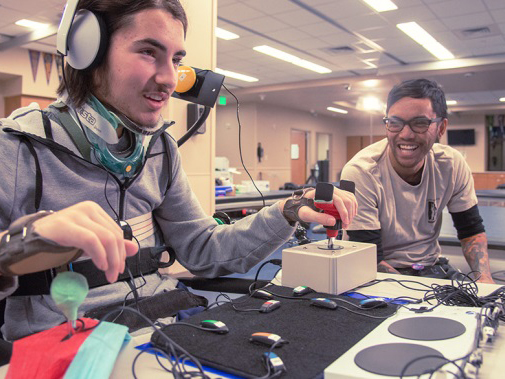Top ranked cerebral palsy claims lawyers

Boyes Turner’s specialist cerebral palsy lawyers have secured a £16 million settlement for a teenager who was permanently disabled as a result of negligent obstetric and midwifery care at birth. The claimant suffered profound and acute hypoxic ischaemia (oxygen deprivation) in the hours leading up to his delayed delivery. The settlement was inclusive of interim payments totalling £875,000, which Boyes Turner obtained to alleviate the claimant’s urgent needs after the defendant hospital admitted liability for his injury. The case was then stayed until the claimant was old enough for his condition and lifelong needs to be assessed.
Life limiting diagnosis
The claimant has four limb dystonic cerebral palsy with significant gross and fine motor impairment, difficulties with speech and language, verbal comprehension and mental processing. He has retained cognitive function but requires SEN support. He has a long life expectation but will require lifelong 24-hour care and support. He has undergone multilevel surgery on his lower limbs to enhance his limited mobility, but this is expected to deteriorate in later life.
How did he develop cerebral palsy?
The claimant’s mother was admitted to the defendant hospital’s antenatal ward when she started having contractions towards the end of her normal, first pregnancy. The fetal heart rate (FHR) was monitored continuously for an hour in the middle of the day and then again for 25 minutes that evening. Her waters broke and she was examined and transferred to the labour ward where a further short period of FHR monitoring revealed abnormalities on the CTG (heart monitor) trace, including reduced beat to beat variability and periods of a lower heart rate than earlier in the day.
These abnormalities should have alerted the midwife to the risk of fetal distress. In these circumstances, the hospital’s own guidelines and general, acceptable standards of care both mandated that the FHR be continuously monitored. If this had been done, the CTG would have revealed ongoing, dangerous abnormalities in the FHR. A doctor should have been called to review the trace and should have decided to transfer the claimant’s mother to theatre to expedite the delivery. However, the midwife failed to alert the doctor and only monitored the FHR intermittently for short periods. In the second stage of labour her intermittent monitoring revealed decelerations in the FHR which, again, should have prompted the midwife to monitor the FHR continuously by CTG.
After the claimant’s mother had been pushing for an hour and a half, a doctor was called to review, but misinterpreted the FHR findings and set a plan to allow the mother to push for a further half an hour before considering instrumental delivery or caesarean section. In the meantime, the doctor ordered that the mother be given syntocinon, a uterine stimulant which risked hyperstimulation of the uterus and further stress to the fetus whose heart rate already showed signs of distress.
25 minutes after the syntocinon was started, continuous CTG monitoring was finally commenced. The 20 minute trace revealed FHR abnormalities including prolonged decelerations and up to six maternal contractions every 10 minutes. The doctor finally obtained a consultant’s agreement to expedite delivery but it was a further 30 minutes before the claimant’s mother was transferred to theatre. After three unsuccessful attempts at forceps delivery it was decided to proceed to caesarean section, delaying the delivery by a further hour. Despite these delays and the obvious risk that the compromised baby would need resuscitation, the paediatricians were not called in time to be present and ready to resuscitate the claimant when he was born in poor condition with marked metabolic acidosis (high acid levels in the blood caused by oxygen deprivation) and a dangerously low heart rate. He was finally transferred to the neonatal unit and developed signs of encephalopathy (brain damage) consistent with severe hypoxic ischaemia prior to delivery.
The claim
Boyes Turner investigated and served a letter of claim on the defendant hospital, which responded with a full admission of liability. At that time, the claimant was far too young for his condition and lifelong needs to be assessed, so the case was stayed until he was old enough to be properly assessed. In the meantime, we obtained interim payments of £875,000 to help the family purchase suitable adapted accommodation, specialist equipment and therapies and provide help with care, case management and the claimant’s special educational needs to alleviate further unnecessary hardship until the claim could be valued and settlement obtained. Once our experts could assess the claimant’s condition, prognosis and current and future needs, we were able to meet with the defendant’s lawyers and settle the claim.
Given the claimant’s long life expectation the settlement was structured to provide inflation-proofed annual payments for care and case management costs, increasing from £53,000pa to £140,000pa in accordance with his age and needs in the form of a PPO. In addition, the claimant will receive a lump sum of £6.1million to provide for the other lifelong needs (such as accommodation, equipment, therapies, assistive technology, transport etc) and financial losses arising from his disability.
If you or someone you care for has suffered permanent disability as a result of negligent medical care please contact us by email at cerebralpalsy@boyesturner.com
They have a great deal of knowledge and expertise, and client care seems to be their top priority.
Chambers Guide to the Legal Profession
Contact our expert Cerebral Palsy solicitors today for support with your claim




